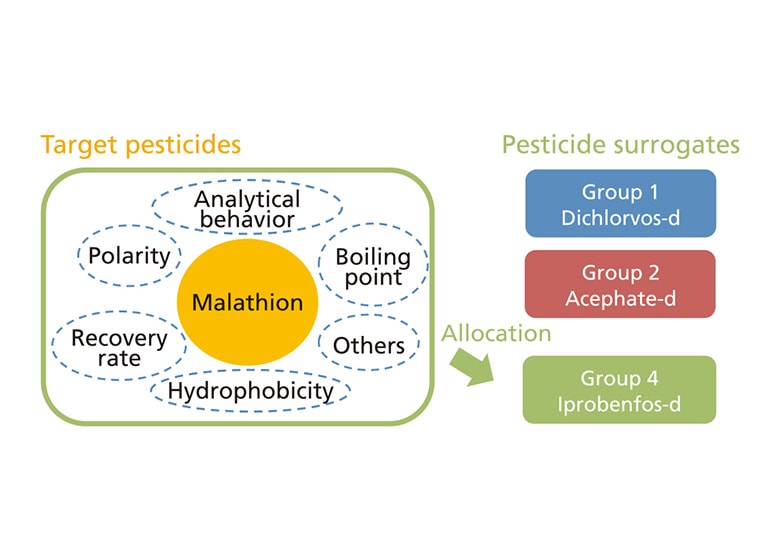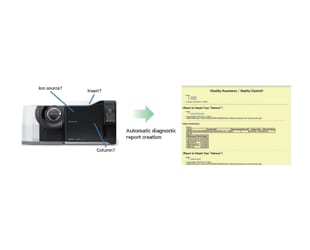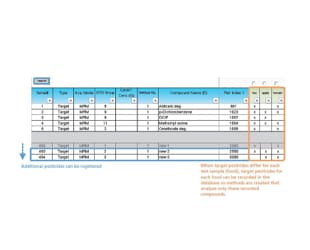GC/MS Residual Pesticides Database Ver.2
Database for GC-MS and GC-MS/MS Ver.2

GC/MS Residual Pesticides Database Ver. 2 is a GC-MS(/MS) analysis database pre-registered with calibration curves created using pesticide surrogates as internal standard substances. This allows for quick residual pesticide screening without the use of pesticide standard samples. The number of pesticides that can be analyzed in MRM mode is 491. Database customization has also been added.
Features
-
The database is registered with analytical conditions for 491 pesticides (retention indices, transitions, calibration curves, etc.).
-
To increase quantitative analysis precision, quantitative values must be adjusted to compensate for pesticide losses during analysis and due to...
-
When analyzing high matrix samples such as those that have undergone simple pretreatment by a QuEChERS method, detection and quantitation may not be...
-
Rapid Precision Control with QA/QC Functions Designed Especially for Pesticide Analysis
Periodic precision control of instruments is... -
This product is the world's only customizable database for residual pesticide screening. Additional analytical conditions (including calibration curve information) can be...
News / Events
-
Latest issue of Shimadzu Journal, featuring Environmental Analysis, has come out.
This issue showcases advanced technologies and research tackling the global challenges posed by PFAS. As part of Shimadzu’s ongoing commitment to sustainability and problem solving, we strive to reduce environmental impacts and build a better future.
-
Automatic Derivatization System for Phenethylamine Drugs
This system allows the on-column derivatization using auto-injector AOC-30i and a LabSolutions GCMS system that is now equipped with 2-step injection. On-column derivatization allows for the direct analysis of extracted urine samples without additional sample pretreatment, which can significantly shorten the time required for derivatization.
-
AOAC INTERNATIONAL Posters are now available.
-
Shimadzu has released the GCMS-QP2050
The next-generation GCMS-QP2050 gas chromatograph mass spectrometer, with its accumulation of impressive Shimadzu technology, will lead the way forward. New value is provided by hardware boasting astounding reliability and stability, and easy-to-operate software equipped with superior automated technology.
-
Solutions for Analysis of Ethylene Oxide and 2-Chloroethanol in Food
Even though Ethylene oxide (EtO / EO) is well-known to be a toxic compound with carcinogenic and mutagenic concerns, it has been widely used for fumigation in the food industry because it effectively reduces or eliminates microbiological contamination with bacteria/fungi. The recent recall of food products exported to the EU due to non-compliance with EU regulations has highlighted the importance of quantitation of EtO and 2-CE residues in food.
-
Latest issue of Shimadzu Journal, featuring Forensics / Toxicology, has come out.
This issue focuses on "Forensics / Toxicology", an area where science and technology are particularly important and needed. It starts with two customer interviews.







